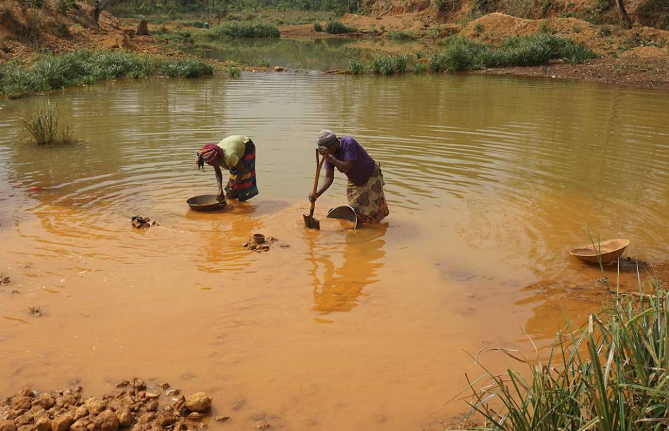
As world leaders are meeting and debating virtually during the United Nations General Assembly (UNGA), Pact and the University of Delaware partnered to publish Mapping Artisanal and Small-scale Mining to the Sustainable Development Goals.
The ASM-SDG Policy Assessment analyzes positive and negative interlinkages between artisanal and small-scale mining (ASM) and each of the 17 UN Sustainable Development Goals (SDGs) and their respective targets.
It is the first time an assessment of the relationships between ASM and all 17 SDGs has been done and the paper provides concrete policy guidance for harnessing ASM-SDG interlinkages and unlocking the sector’s potential in contributing to the realization of the UN 2030 Agenda for Sustainable Development.
The ASM sector produces copper and cobalt, which are needed to develop new technologies to transition to a low carbon and renewable energy system, and the Policy Assessment was released before the UNGA, which runs virtually until September 30.
The publication promotes an inclusive approach to formalizing the ASM sector that takes into account each of the 17 SDGs, and ensures that the implementation of the formalization strategies harnesses the full potential of the ASM sector, mitigating possible negative impacts, lead author and program officer with Pact Mines to Market, Jorden de Haan told MINING.COM.
With ASM being found to have both positive and negative impacts, de Haan said this illustrates the multi-faceted nature of the sector, which is estimated by World Bank data to employ at least 42 million people directly across the globe.
ASM is estimated by World Bank data to employ some 42 million people directly across the globe
“In a nutshell, we conclude that ASM is related to each of the 17 SDGs, and has both negative and positive impacts, however we need to be aware the sector is currently largely informal and it receives little technical, financial and organizational assistance compared to other sectors in the formal economy,” de Haan said.
“We evaluate all of the targets, both positive and negative impacts. The informal sector is realizing only a small part of its potential. Therefore, we are also looking at potential impacts if the ASM sector was formalized,” de Haan said.
Downstream effects on local economies, especially in fragile areas with limited economic activity has a strong impact on reducing poverty, especially extreme poverty, de Haan said.
A large proportion of women and children are employed in the informal ASM, and it is estimated that about 30% of the ASM global workforce are women.
De Haan said clear positive SDG impacts are employment, economic growth and decent work, while deaths in the sector are a very clear negative impact, as well as occupational health and safety issues.
“Formalization is what can mitigate the negative impacts on the SDGs, although can’t eliminate some of the health and safety risks inherent to the ASM sector, and we have a long way to go to improving and reducing those,” de Haan said.
“At the same time it has a really important and strong impact on amplifying the impact that the sector already has on the SDGs, and unlocking potential that has not been realized in respect to formalization.”
Formalization has been documented to have negative impacts, especially when approached from a top-down manner, which de Haan said can be reduced to mere legalization of the sector, for example as miners go after licenses.
De Haan pointed out the difference between legality and legitimacy and how negative connotations marginalize the sector further, and said policy language should focus on formality, rather than legality.
To address the recommendations, Pact has a virtual event on October 15 moderated by Antonio Pedro, Director with UN Economic Commission for Africa’s Subregional Office for Central Africa, jointly with the United Nations Sustainable Development Solutions Network, the Responsible Mining Foundation and the Columbia Center on Sustainable Investment.